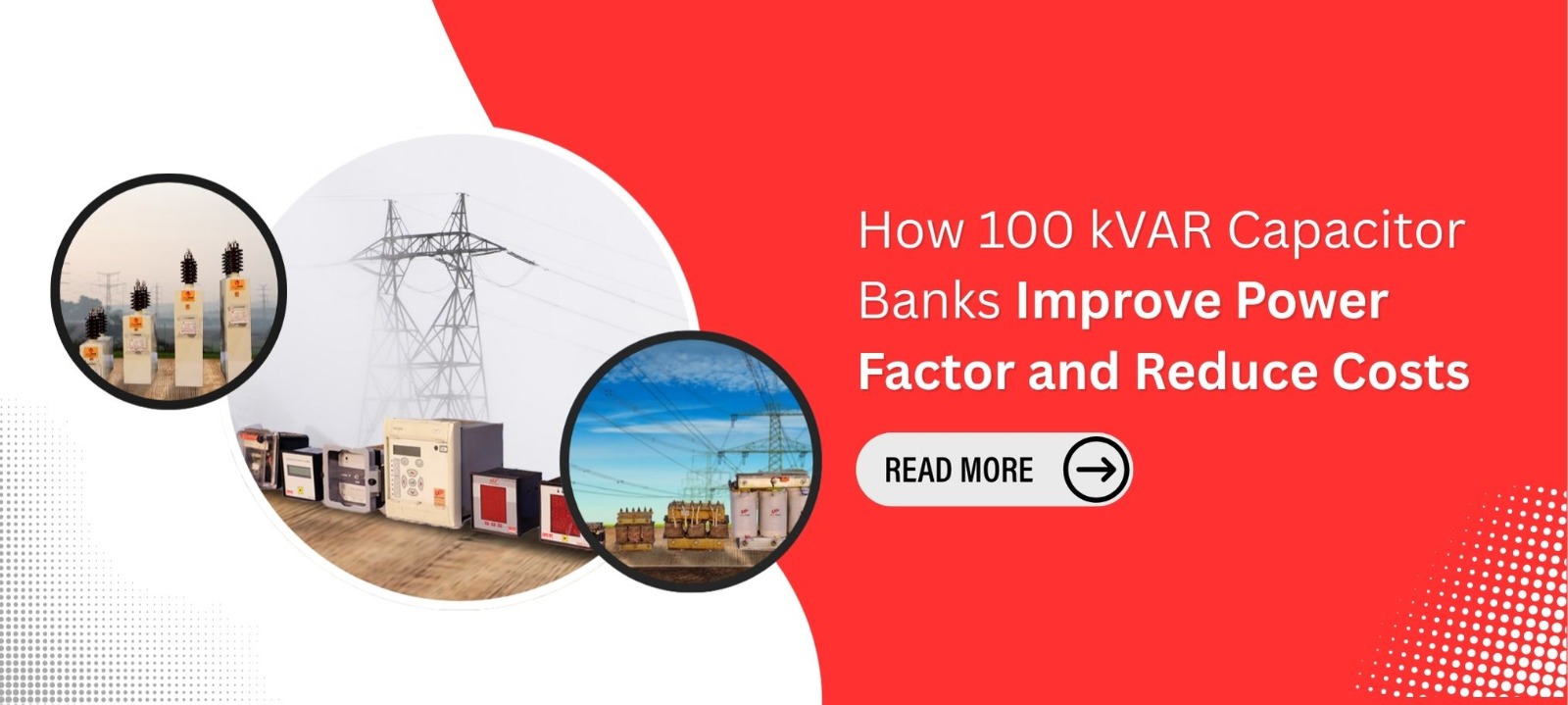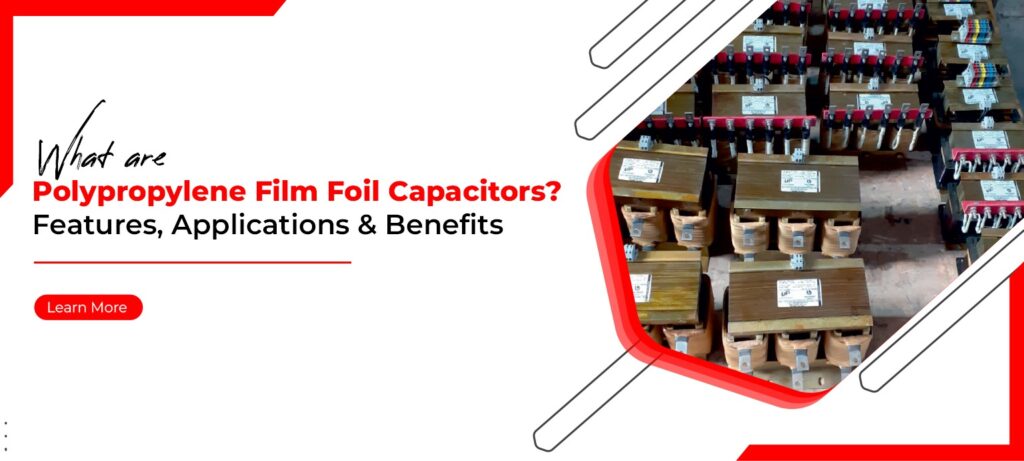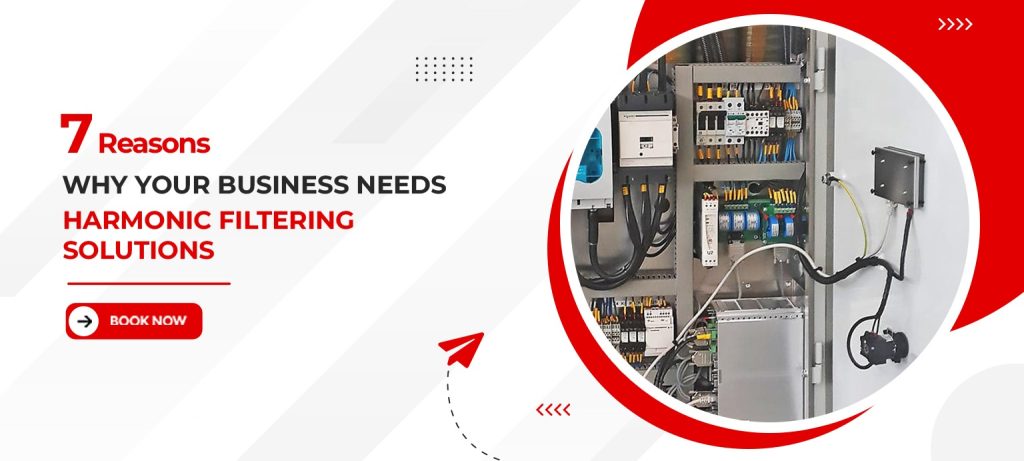In industrial and commercial electrical systems, maintaining a high power factor is not just a technical goal—it’s a financial necessity. Low power factor leads to inefficient energy usage, higher electricity bills, and potential penalties from utility providers. One of the most effective and widely used solutions to this issue is installing 100 kVAR Capacitor Banks. These capacitor banks are specifically designed to offset the inductive effects of motors and other equipment, thereby improving the overall power factor. By supplying reactive power locally, they reduce the demand from the utility grid, improve voltage levels, and bring down the apparent power required by the system. This not only enhances energy efficiency but also extends the life of equipment by maintaining voltage stability. Industries that rely heavily on motor-driven machinery, such as manufacturing, textiles, cement, and chemical processing, can benefit immensely from incorporating these capacitor banks into their power systems.
Understanding Power Factor and Why It Matters
Power factor is the ratio of real power (kW) to apparent power (kVA) in an electrical system. A low power factor means that more apparent power is required to do the same amount of useful work, which leads to inefficiencies. Most utility companies charge customers based on the maximum kVA demand. So, if a system has a low power factor, it ends up drawing more current, leading to higher energy bills and potential overloading of cables, transformers, and other infrastructure. Correcting this inefficiency using 100 kVAR Capacitor Banks ensures that more of the energy drawn is actually used for productive work.
Why Choose 100 kVAR Capacitor Banks?
The size of a capacitor bank is determined by the level of reactive power compensation required. 100 kVAR Capacitor Banks are particularly suitable for medium to large-scale industries where a significant amount of inductive load is present. These units offer an ideal balance between capacity and manageability, providing enough compensation without requiring overly complex installations. Their modular design allows them to be added easily to existing systems or integrated into new projects. By strategically placing these capacitor banks near large inductive loads, businesses can significantly improve their local power factor, reduce system losses, and optimize voltage profiles.
How 100 kVAR Capacitor Banks Reduce Energy Costs
When your facility has a poor power factor, the utility has to supply more apparent power, which often leads to extra charges. These are known as power factor penalties. By installing 100 kVAR Capacitor Banks, you can eliminate or at least minimize these penalties. Additionally, improved power factor means reduced current flow through cables and transformers, which translates to lower line losses and reduced heating. Over time, these savings accumulate, providing a strong return on investment. For industries operating on tight margins, reducing even a small percentage of their energy bill can lead to significant savings annually.
Improving Equipment Lifespan and System Reliability
Running equipment on low power factor for long periods causes them to draw more current than necessary, leading to overheating and early wear. Voltage drops become more common in such cases, which can be harmful to sensitive machinery and electronic devices. By improving the power factor using 100 kVAR Capacitor Banks, the system voltage stabilizes and current levels drop, resulting in smoother operation and less stress on components. This not only reduces downtime but also prolongs the lifespan of motors, transformers, and switchgear.
Easier Maintenance and Monitoring
Modern 100 kVAR Capacitor Banks are often equipped with features like automatic power factor controllers, protective relays, and display panels. These features allow operators to monitor the system’s performance in real-time and ensure optimal operation without constant manual intervention. Maintenance is also simplified, as the modular nature of these banks allows for easy replacement or servicing of individual units. These features enhance the overall reliability and performance of the power system while reducing labor and maintenance costs.
Custom Solutions for Different Load Patterns
Every industry operates differently, and load patterns vary throughout the day. One of the major advantages of using 100 kVAR Capacitor Banks is their ability to adapt to these changing demands. With intelligent switching and automation options, these banks can be set up to respond dynamically to the load requirements. This means that capacitors are only brought online when needed, preventing overcompensation and keeping the system balanced. This level of control ensures that your power factor remains within the optimal range at all times, regardless of the operational schedule.
Environmental and Compliance Benefits
Using capacitor banks not only makes financial sense but also supports environmental goals. By making your power system more efficient, you reduce your overall energy consumption and, by extension, your carbon footprint. Additionally, many regulatory bodies now require industries to maintain a minimum power factor. Non-compliance can lead to fines, mandatory upgrades, or even disconnection from the grid. Installing 100 kVAR Capacitor Banks helps meet these requirements effortlessly and ensures smoother interactions with your energy provider and local authorities.
Installation Considerations and Safety
When installing 100 kVAR Capacitor Banks, it’s crucial to assess your facility’s specific reactive power requirements. A professional audit is often recommended to determine the ideal placement and configuration. Safety measures, such as proper grounding, isolation, and protection against overvoltage, should always be implemented. It’s also important to ensure that your capacitor bank is rated appropriately for your voltage level and environment. Modern units come with built-in protection systems, making them safer and more user-friendly for engineers and technicians.
Final Thoughts
Investing in 100 kVAR Capacitor Banks is a strategic decision for any business aiming to improve power quality, enhance energy efficiency, and reduce long-term operational costs. These capacitor banks not only correct poor power factor but also help stabilize voltage levels, reduce system losses, and extend the operational life of critical electrical equipment. Whether you manage a manufacturing facility, operate a heavy processing plant, or run a commercial establishment with significant inductive loads, installing the right capacitor banks can bring both immediate and long-term financial benefits. Over time, the savings from reduced energy bills, fewer penalties, and decreased maintenance make capacitor banks a self-paying investment. As more industries shift toward smarter, energy-efficient, and cost-optimized solutions, 100 kVAR Capacitor Banks will continue to play a key role in ensuring electrical systems remain stable, efficient, and compliant with utility norms.
If you are part of the industrial or commercial sector and actively searching for durable, efficient, and high-performance capacitor banks to solve power factor issues or optimize your electrical systems, Usha Power is your trusted partner. With over two decades of experience in power quality solutions, our team is dedicated to delivering capacitor banks that meet the highest standards of engineering excellence and operational safety. We understand the challenges businesses face due to rising energy costs, fluctuating voltage levels, and system inefficiencies. That’s why we design and manufacture capacitor banks that are not only technically robust but also customized to match specific load requirements and installation conditions.
Visit www.ushapower.com to explore our full range of capacitor bank solutions and let us support your journey toward a more stable, efficient, and cost-effective power system. At Usha Power, we take pride in helping industries operate smarter, save more, and power their future with confidence.




